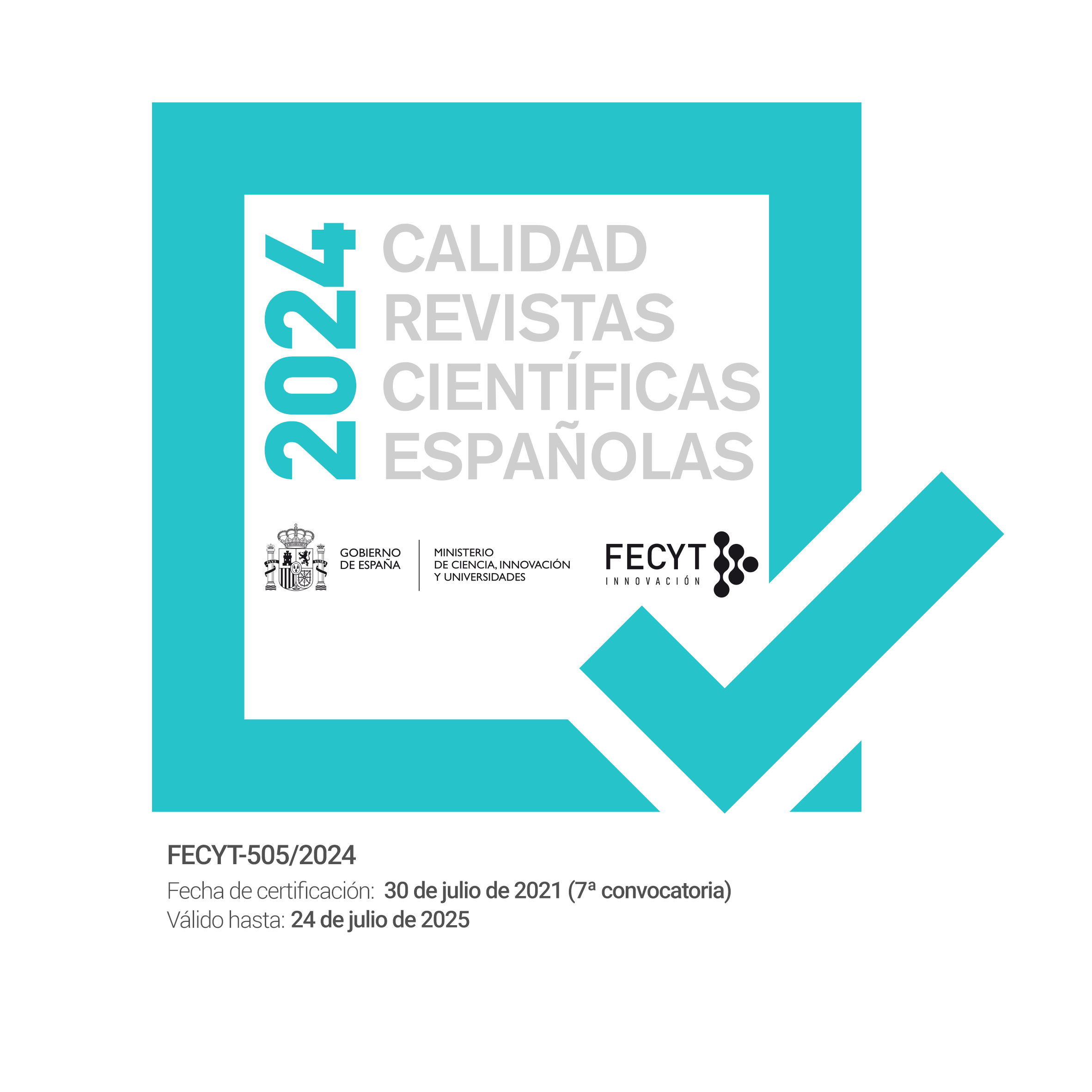La filosofia de la teoria quàntica
DOI:
https://doi.org/10.7203/qfia.9.2.25283Keywords:
teoria quàntica, problema de la mesura, variables ocultes, molts mons, col·lapse objectiu Abstract
Abstract
The philosophy of quantum theory
Resumen: La teoria quàntica representa una de les fites més importants de la història de la ciència del segle XX, tant pel que fa a les seues implicacions teòriques i tecnològiques com pel que fa als problemes conceptuals que planteja la seua interpretació. Aquest article constitueix una revisió de les propostes interpretatives del formalisme quàntic d’ençà que la teoria es va axiomatitzar a les acaballes de la dècada dels anys 20 del segle passat. Aquestes propostes incideixen en problemes filosòfics com la no-localitat, l’indeterminisme, la probabilitat o el realisme científic, per a cadascun dels quals s’ofereix una resposta temptativa a partir de la interpretació del formalisme corresponent.
Abstract: Quantum theory represents one of the most important milestones in the history of science in the 20th century, both in terms of its theoretical and technological implications and in terms of the conceptual problems posed by its interpretation. This article constitutes a review of the interpretive proposals of the quantum formalism since the theory was axiomatized at the end of the decade of the 20s of the last century. These proposals rise philosophical problems such as non-locality, indeterminism, probability or scientific realism, for each of which a tentative answer is offered based on the interpretation of the corresponding formalism.
Palabras clave: Teoria quàntica, problema de la mesura, variables ocultes, molts mons, col.lapse objectiu.
Keywords: Quantum theory, measurement problem, hidden variables, many worlds, objective collapse.
 Downloads
Downloads
 References
References
Albert, D. Z. 1992, Quantum Mechanics and Experience, Cambridge: Harvard University Press.
Albert, D. i Loewer, B. 1988, “Interpreting the many-world interpretation”, Synthese, 77: 195-213.
Allori, V. 2013, “Primitive ontology and the structure of fundamental physical theories”, en D. Albert i A. Ney (ed.), The Wave Function: Essays on the Metaphysics of Quantum Mechanics, Nova York: Oxford University Press, 58-75.
Aspect, A. 1976, “Proposed experiment to test the nonseparability of quantum mechanics”, Physical Review D, 14 (8), 1944.
Bacciagulpi, G. i Valentini, A. 2009, Quantum Theory at the Crossroads: Reconsidering the 1927 Solvay Conference, Cambridge: Cambridge University Press.
Ballentine, L. E. 1973, “Can the statistical postulate of quantum theory be derived? - A critique of the many-universes interpretation”, Foundations of Physics, 3 (2): 229-40.
Ballentine, L. E. 1998, Quantum Mechanics: A Modern Development, Singapur: World Scientific.
Barrett, J. 2011, “Everett’s pure wave mechanics and the notion of worlds”, European Journal for Philosophy of Science, 1 (2): 277-302.
Bell, J. S. 1964, “On the Einstein Podolsky Rosen paradox”, Physics, 1 (3): 195-200.
Bell, J. S. 1982, “On the impossible pilot wave”, Foundations of Physics: 159-68.
Bell, J. S. 1987, “Are there quantum jumps?”, en J. S. Bell, Speakable and Unspeakable in Quantum Mechanics, Cambridge: Cambridge University Press, 201-12.
Bohm, D. 1952, “A suggested interpretation of the quantum theory in terms of hidden variables”, Physical Review, 85: 166-79.
Bohr, N. 1988, La teoría atómica y la descripción de la naturaleza (M. Ferrero Melgar, Trad.), Madrid: Alianza. [Obra original publicada en 1984.]
Carlesso, M. i Donadi, S. 2019, “Collapse models: main properties and the state of the experimental tests”, Advances in Open Systems and Fundamental Tests of Quantum Mechanics: 1-13.
Carlesso, M.; Donadi, S.; Ferialdi, L.; Paternostro, M.; Ulbricht, H. i Bassi, A. 2022, “Present status and future challenges of non-interferometric tests of collapse models”, Nature Physics, 18: 243-50.
de Broglie, L. 1927, “La structure atomique de la matière et du rayonnement et la mécanique ondulatoire”, Journal de Physique, VI: 8-25.148
De Witt, B. S. i Graham, N. 1973, The Many-Worlds Interpretation of Quantum Mechanics, Princeton: Princeton University Press.
Dorato, M. i Esfeld, M. 2010, “GRW as an ontology of dispositions”, Studies in History and Philosophy of Modern Physics, 41: 41-9.
Dürr, D.; Goldstein, S. i Zanghì, N. 1992, “Quantum equilibrium and the origin of absolute uncertainty”, Journal of Statistical Physics, 67: 843-907.
Dürr, D.; Goldstein, S. i Zanghì, N. 1996, “Bohmian mechanics as the foundation of quantum mechanics”, en Bohmian Mechanics and Quantum Theory: An Appraisal, Dordrecht: Springer, 21-44.
Dürr, D.; Goldstein, S. i Zanghì, N. 1997, “Bohmian mechanics and the meaning of the wave function”, en R. S. Cohen, M. Horne i J. Stachel, Potentiality, Entanglement and Passion-at-a-Distance - Quantum Mechanical Studies in Honor of Abner Shimony, Dordrecht: Kluwer.
Einstein, A.; Podolsky, B. i Rosen, N. 1935, “Can quantum-mechanical description of physical reality be considered complete?”, Physical Review, 47(10): 777-80.
Esfeld, M. 2007, “Metaphysics of science between metaphysics and science”, Grazer Philosophische Studien, 74: 199-213.
Esfeld, M. 2014, “The primitive ontology of quantum physics: guidelines for an assessment of the proposals”, Studies in History and Philosophy of Modern Physics, 47: 99-106.
Everett III, H. 1957, “‘Relative state’ formulation of quantum mechanics”, Reviews of Modern Physics, 29: 454-62.
Freire Jr., O. 2015, The Quantum Dissidents: Rebuilding the Foundations of Quantum Mechanics (1950-1990), Berlin: Springer.
Ghirardi, G., 2002, “Collapse Theories”, The Stanford Encyclopedia of Philosophy. Obtingut de: https://plato.stanford.edu/archives/sum2020/entries/qm-collapse/
Ghirardi, G., Grassi, R. i Benatti, F. (1995). Describing the macroscopic world: closing the circle within the dynamical reduction program. Foundations of Physics, 25(1), 5-38.
Ghirardi, G.; Rimini, A. i Weber, T. 1986, “Unified dynamics for microscopic and macroscopic systems”, Physical Review D, 34 (2): 470-91.
Heisenberg, W. K. 1949, The physical principles of quantum theory (C. Eckart i F. C. Hoyt, Trads.), Nova York: Dover. [Obra original publicada en 1930.]
Holland, P. R. 1995, The Quantum Theory of Motion: An Account of the de Broglie-Bohm Causal Interpretation of Quantum Mechanics, Cambridge: Cambridge University Press.
Laplace, P. S. 1814, Essai philosophique sur les probabilités, París: Courcier.
Maudlin, T. 1995, “Three measurement problems”, Topoi, 14 (1): 7-15.
Maudlin, T. 2010, “Can the world be only wavefunction?”, en S. Saunders, Many Worlds? Everett, Quantum Theory, and Reality, Oxford: Oxford University Press, 121-43.
Maudlin, T. 2013, “The nature of the quantum state”, en D. Albert i A. Ney (ed.), The Wave Function: Essays on the Metaphysics of Quantum Mechanics, Nova York: Oxford University Press, 126-53.
Mermin, D. 1990, “Simple unified form for the major no-hidden variables theorem”, Physical Review Letters, 65: 3373.
Norsen, T. 2018, “On the explanation of Born-rule statistics in the de Broglie-Bohm pilot-wave theory”, Entropy, 20 (6): 422.
Pearle, P. 1989, “Combining stochastic dynamical state-vector reduction with spontaneous localization”, Physical Review A, 39 (5): 2277-89.
Popper, K. R. 2011, “Volumen II. El universo abierto. Un argumento en favor del indeterminismo”, en W. W. Bartley (ed.), Post scriptum a La lógica de la investigación científica (M. Sansigre Vidal, Trad.), Madrid: Tecnos. [Obra original publicada en 1982.]
Schlosshauer, M. 2007, Decoherence and the Quantum-to-Classical Transition, Berlin/Heidelberg: Springer.
Schrenk, M. 2016, Metaphysics of Science: A Systematic and Historical Introduction, Routledge.
Schrödinger, E. 1980, “The present situation in quantum mechanics: a translation of Schrödinger’s ‘cat paradox’ paper”, Proceedings of the American Philosophical Society, 124: 323-38.
Valentini, A. i Westman, H. 2005, “Dynamical origin of quantum probabilities”, Proceedings of the Royal Society of London A 461: 253-72.
Von Neumann, J. 1955, Mathematical Foundations of Quantum Mechanics, Princeton: Princeton University Press. [Obra original publicada en 1932.]
Wallace, D. 2008, “The interpretation of quantum mechanics”, en D. Rickles (ed.), The Ashgate Companion to Contemporary Philosophy of Physics, Burlington: Ashgate, 197-261.
Wallace, D. 2010, “How to prove the Born rule”, en S. Saunders, J. Barrett, A. Kent i D. Wallace (ed.), Many Worlds? Everett, Quantum Theory, and Reality, Oxford: Oxford University Press.
Wallace, D. 2012, The Emergent Multiverse: Quantum Theory According to the Everett Interpretation, Oxford: Oxford University Press.
Zeh, H.-D. 1970, “On the interpretation of measurement in quantum theory”, Foundations of Physics, 1 (1): 69-76.
Zurek, W. H. 1981, “Pointer basis of quantum apparatus: into what mixture does the wave packet collapse?”, Physical Review D, 24: 1516-25.
Downloads
Published
How to Cite
-
Abstract402
-
PDF (Català)308
Issue
Section
License
![]()
Works published in QUADERNS DE FILOSOFIA are under the licence Creative Commons Attribution-NonComercial-NoDerivatives 4.0 International.
Authors retain copyright and grant the journal right of first publication with the work simultaneously licensed under a Creative Commons Attribution License that allows others to share the work with an acknowledgement of the work's authorship and initial publication in this journal.
Authors are able to enter into separate, additional contractual arrangements for the non-exclusive distribution of the journal's published version of the work (e.g., post it to an institutional repository or publish it in a book), with an acknowledgement of its initial publication in this journal.
The authors authorize the publisher to archive the article into databases and indexes (such as EBSCO, DOAJ, ProQuest), and permit the publisher to apply DOI to the article.
Authors are permitted and encouraged to post their work online (e.g., in institutional repositories or on their website) prior to and during the submission process, as it can lead to productive exchanges, as well as earlier and greater citation of published work (See The Effect of Open Access).





